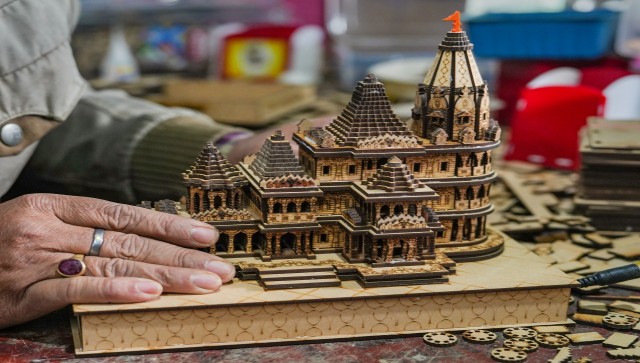The Ram Mandir is set to be consecrated amid much fanfare at 12.20 pm on 22 January. Prime Minister Narendra Modi and a slew of other dignitaries including athletes, film stars, industrialists and spiritual leaders will be present in Ayodhya on that day. But why was 22 January chosen as the date? Let’s take a closer look: As per News9, this date syncs up with the auspicious Abhijit Muhurat. The Abhijit Muhurat on 22 January lasts from 11:51 am to 12:33 pm.
Abhijit Muhurat is extremely significant in Hindu mythology.
It is when, according to legend, Lord Shiva killed the demon Tripurasur. This muhurat is thus linked with removing any negative energies from life. It is also believed to be a good day to start a new enterprise – be it a job, a business, buying a new home. Mrigashira Nakshatra also begins at 3:52 am on that date and continues till 4.58 am on 23 January. This is considered a good omen for the consecration ceremony. The Mrigashira Nakshatra is connected with the deity Soma – also known as the “God of Immortality”. Denoted by a deer, it signifies the search for knowledge and experience. Mrigashira, ruled by Mars, is characterised by activity and constant motion. It is thought to be auspicious for a slew of rituals. Its positive influence begins on 22 January and lasts till the morning of 23 January. Times Now quoted Mahant Govind Dev Giri, the treasurer of Shri Ram Janmabhoomi Teerth Kshetra Trust, as saying that ‘Amrit Siddhi Yoga’ and ‘Sarvartha Siddhi Yoga’ also coincide with this date. This makes it very suited for the ceremony. Meanwhile, Sri Ram Janambhoomi Trust general secretary Champat Rai compared the date to India’s Independence Day. [caption id=“attachment_13566662” align=“alignnone” width=“640”] Renowned sculptor Arun Yogiraj with idol of Ram Lalla, which has been chosen for the consecration ceremony at the Ram Temple in Ayodhya. Image Courtesy: @prahladJoshi/X[/caption] “22 January, 2024, is as important as 15 August, 1947. It is equally important as getting Kargil back, and as much as the detention of a lakh soldiers was important in 1971,” Champat Rai said. There is a feeling of satisfaction among the people of Ayodhya over the construction of the temple which has become an ‘instrument to unite India’, he said. “There is a feeling of satisfaction. The people of Ayodhya, small princely states of the neighbourhood, priests, teachers and all the saints from all over India after 1983, started getting associated with it. The subject which was limited only to Ayodhya has become the subject of the respect of the entire country,” he added. The Sri Ram Janmabhoomi Tirath Kshetra Trust has decided to enthrone Ram Lalla at the sanctum-sanctorum of the temple at noon on January 22. The trust has also invited 4,000 saints to the ceremony. A priest from Varanasi, Lakshmi Kant Dixit, will perform the rituals of the consecration ceremony on January 22. From January 14 to January 22, Ayodhya will celebrate Amrit Mahautsav. A 1,008 Hundi Mahayagya will also be organised, in which thousands of devotees will be fed. Several tent cities are being set up in Ayodhya to accommodate thousands of devotees, who are expected to arrive in the temple town for the ceremony. According to the Sri Ram Janambhoomi Trust, arrangements will be made for 10,000-15,000 people. Local authorities are gearing up for an anticipated surge in visitors around the ceremony and are in the process of implementing enhanced security measures and making logistical arrangements to ensure a smooth experience for all. With inputs from agencies


)

)
)
)
)
)
)
)
)



